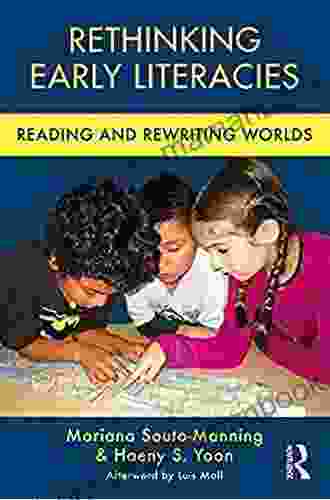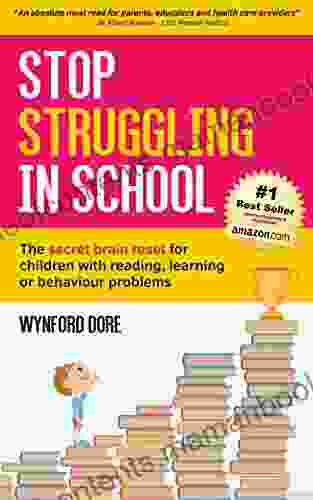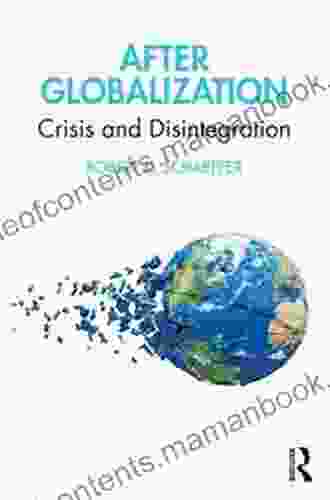Reading and Rewriting Worlds: Changing Images of Early Childhood

The way we think about early childhood has been shaped and reshaped by literature. From Victorian moral tales to contemporary picture books, literature has reflected and influenced our understanding of what it means to be a child.
In the Victorian era, children were often seen as innocent and vulnerable creatures who needed to be protected from the harsh realities of the world. This view of childhood was reflected in the literature of the time, which often featured idealized depictions of children as sweet and innocent beings.
4.6 out of 5
| Language | : | English |
| File size | : | 3585 KB |
| Text-to-Speech | : | Enabled |
| Screen Reader | : | Supported |
| Enhanced typesetting | : | Enabled |
| Word Wise | : | Enabled |
| Print length | : | 262 pages |
In the 20th century, our understanding of childhood began to change. Psychologists and sociologists began to argue that children are not simply passive recipients of knowledge and experience, but rather active participants in their own development. This new understanding of childhood was reflected in the literature of the time, which began to depict children as more complex and capable beings.
In recent years, our understanding of childhood has continued to evolve. We now recognize that children are not simply mini-adults, but rather unique individuals with their own needs and perspectives. This new understanding of childhood has been reflected in the literature of the time, which increasingly features diverse and realistic depictions of children.
The way we depict children in literature has a profound impact on how we think about them in the real world. When we read stories about innocent and vulnerable children, we are more likely to see children that way in our own lives. Conversely, when we read stories about complex and capable children, we are more likely to see children that way in our own lives.
Literature can be a powerful force for change. By changing the way we depict children in literature, we can change the way we think about them in the real world. We can create a more just and equitable world for all children by promoting a more positive and realistic image of childhood.
The Victorian Era
The Victorian era was a time of great social and economic change. The Industrial Revolution led to the rise of a new middle class, and the population of cities exploded. These changes had a profound impact on the way people thought about children.
In the Victorian era, children were often seen as innocent and vulnerable creatures who needed to be protected from the harsh realities of the world. This view of childhood was reflected in the literature of the time, which often featured idealized depictions of children as sweet and innocent beings.
One of the most popular Victorian children's books was Little Women by Louisa May Alcott. This book tells the story of four sisters who grow up in a small New England town. The sisters are all very different, but they are all united by their love for each other and their strong moral values.
Little Women was a huge success, and it helped to shape the way people thought about children for generations to come. The book's depiction of innocent and virtuous children helped to create a nostalgic view of childhood that still persists today.
The 20th Century
The 20th century was a time of great social and cultural change. The two World Wars, the Great Depression, and the Civil Rights Movement all had a profound impact on the way people thought about themselves and the world around them.
These changes were reflected in the literature of the time, which began to depict children in a more realistic and complex way. Writers such as Mark Twain, J.D. Salinger, and Judy Blume wrote about children who were struggling with real-world problems such as poverty, abuse, and loneliness.
One of the most important children's books of the 20th century was To Kill a Mockingbird by Harper Lee. This book tells the story of a young girl named Scout who grows up in the American South during the 1930s. Scout is a strong and independent girl, but she also witnesses the racism and injustice that is rampant in her community.
To Kill a Mockingbird was a groundbreaking book, and it helped to change the way people thought about children. The book's depiction of a complex and capable child helped to dispel the myth of the innocent and vulnerable child.
The 21st Century
The 21st century is a time of great technological and social change. The Internet has revolutionized the way we communicate and learn, and the global economy has created new opportunities and challenges.
These changes are reflected in the literature of the time, which increasingly features diverse and realistic depictions of children. Writers such as Jacqueline Woodson, Rita Williams-Garcia, and Meg Medina are writing about children from all walks of life, and they are exploring complex issues such as race, class, and gender.
One of the most important children's books of the 21st century is Brown Girl Dreaming by Jacqueline Woodson. This book tells the story of a young girl named Jacqueline who grows up in the American South during the 1960s and 1970s. Jacqueline is a gifted poet, and she uses her words to explore the challenges and triumphs of growing up as a black girl in America.
Brown Girl Dreaming is a powerful and moving book, and it is a testament to the power of literature to change the way we think about the world. The book's depiction of a complex and resiliant child helps to dispel the myth of the innocent and vulnerable child, and it helps to create a more just and equitable world for all children.
The way we depict children in literature has a profound impact on how we think about them in the real world. By changing the way we depict children in literature, we can change the way we think about them in the real world. We can create a more just and equitable world for all children by promoting a more positive and realistic image of childhood.
4.6 out of 5
| Language | : | English |
| File size | : | 3585 KB |
| Text-to-Speech | : | Enabled |
| Screen Reader | : | Supported |
| Enhanced typesetting | : | Enabled |
| Word Wise | : | Enabled |
| Print length | : | 262 pages |
Do you want to contribute by writing guest posts on this blog?
Please contact us and send us a resume of previous articles that you have written.
 Top Book
Top Book Novel
Novel Fiction
Fiction Nonfiction
Nonfiction Literature
Literature Paperback
Paperback Hardcover
Hardcover E-book
E-book Audiobook
Audiobook Bestseller
Bestseller Classic
Classic Mystery
Mystery Thriller
Thriller Romance
Romance Fantasy
Fantasy Science Fiction
Science Fiction Biography
Biography Memoir
Memoir Autobiography
Autobiography Poetry
Poetry Drama
Drama Historical Fiction
Historical Fiction Self-help
Self-help Young Adult
Young Adult Childrens Books
Childrens Books Graphic Novel
Graphic Novel Anthology
Anthology Series
Series Encyclopedia
Encyclopedia Reference
Reference Guidebook
Guidebook Textbook
Textbook Workbook
Workbook Journal
Journal Diary
Diary Manuscript
Manuscript Folio
Folio Pulp Fiction
Pulp Fiction Short Stories
Short Stories Fairy Tales
Fairy Tales Fables
Fables Mythology
Mythology Philosophy
Philosophy Religion
Religion Spirituality
Spirituality Essays
Essays Critique
Critique Commentary
Commentary Glossary
Glossary Bibliography
Bibliography Index
Index Table of Contents
Table of Contents Preface
Preface Introduction
Introduction Foreword
Foreword Afterword
Afterword Appendices
Appendices Annotations
Annotations Footnotes
Footnotes Epilogue
Epilogue Prologue
Prologue Danielle Duckery
Danielle Duckery Martin E Block
Martin E Block Edward Kamens
Edward Kamens Robert A Ricklis
Robert A Ricklis Paul E Knowlton
Paul E Knowlton Roz Morris
Roz Morris Aaron Dembski Bowden
Aaron Dembski Bowden Carla Kelly
Carla Kelly Angela Ferraro Fanning
Angela Ferraro Fanning Tammi Young
Tammi Young A Wayne Wymore
A Wayne Wymore Asavari Singh
Asavari Singh Motomu Takayama
Motomu Takayama Frank Walters Clark
Frank Walters Clark Sherry Riggs
Sherry Riggs Eliza Watson
Eliza Watson Charles Massy
Charles Massy Zelda Lockhart
Zelda Lockhart Mary De Chesnay
Mary De Chesnay A T Sergio
A T Sergio
Light bulbAdvertise smarter! Our strategic ad space ensures maximum exposure. Reserve your spot today!
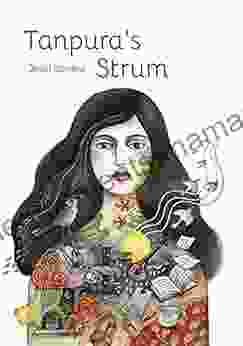
 Chase SimmonsA Collection Of Captivating Haiku And Tanka Poems: A Journey Into The Heart...
Chase SimmonsA Collection Of Captivating Haiku And Tanka Poems: A Journey Into The Heart... Mark MitchellFollow ·7.1k
Mark MitchellFollow ·7.1k Corbin PowellFollow ·15.3k
Corbin PowellFollow ·15.3k Jeffrey HayesFollow ·14.2k
Jeffrey HayesFollow ·14.2k Gabriel BlairFollow ·8.6k
Gabriel BlairFollow ·8.6k Brandon CoxFollow ·8.8k
Brandon CoxFollow ·8.8k Evan HayesFollow ·8.4k
Evan HayesFollow ·8.4k Lee SimmonsFollow ·3.8k
Lee SimmonsFollow ·3.8k Cruz SimmonsFollow ·12.9k
Cruz SimmonsFollow ·12.9k
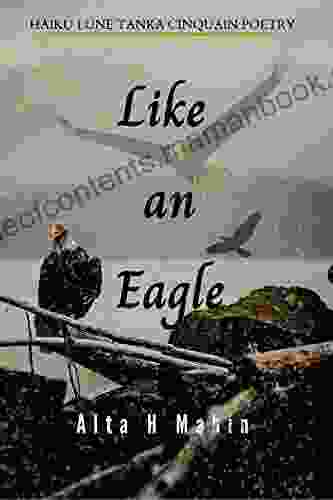
 Derek Bell
Derek BellLike An Eagle Alta Mabin: A Literary Journey Through the...
Like An Eagle Alta Mabin is a powerful...
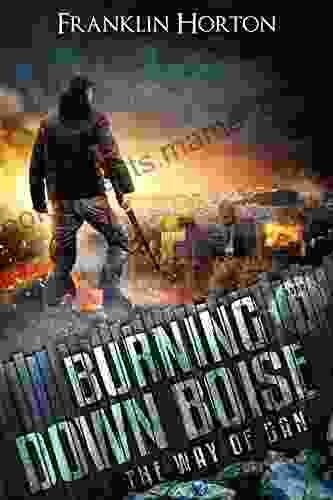
 Garrett Powell
Garrett PowellOne in the Way of Dan: A Complex and Nuanced Novel
Dan is a successful...

 Foster Hayes
Foster HayesThe Ultimate Air Fryer Cookbook for Beginners: A...
Welcome to...
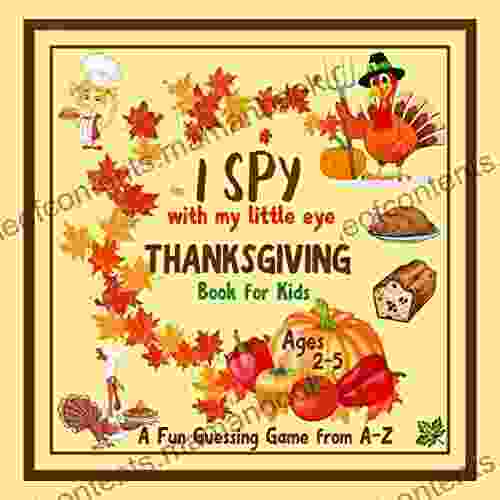
 Paulo Coelho
Paulo CoelhoFun Guessing Game From Cute Pictures: The Best Gift for...
Looking for a fun...
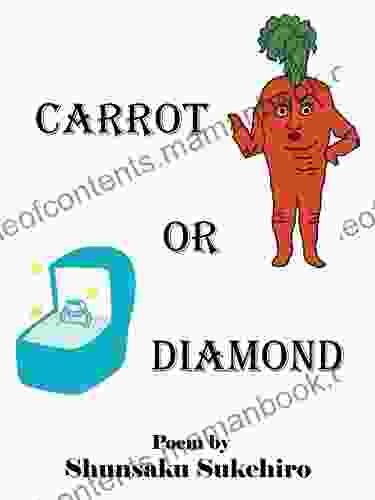
 Dan Henderson
Dan HendersonEnglish Poetry About Modern Day Japan: A Journey Through...
Step into the realm where...
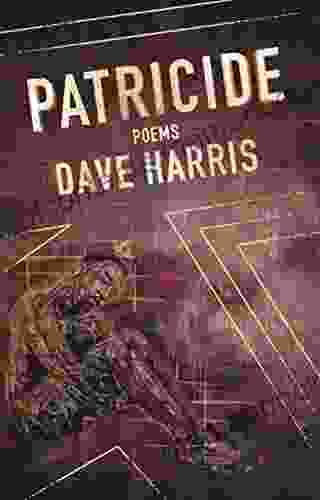
 Jamie Blair
Jamie BlairThe Enigma of Patricide Dave Harris: A Journey into the...
The annals of true crime are replete with...
4.6 out of 5
| Language | : | English |
| File size | : | 3585 KB |
| Text-to-Speech | : | Enabled |
| Screen Reader | : | Supported |
| Enhanced typesetting | : | Enabled |
| Word Wise | : | Enabled |
| Print length | : | 262 pages |


